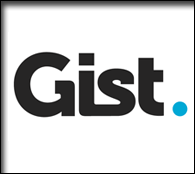Lowering Risk at Decision Points
by Eric Norlin on Sep.08, 2010, under Uncategorized
I’ve actually got the chance to catch up on a little blog reading this morning, and I just got to digest Sameer Patel’s wonderful post entitled, “Innovation 1.0, served here.” The bit that really hit home was this (emphasis mine):
“By organizations embracing and encouraging innovation, that really doesn’t equate to every factory worker walking off the line and putting on a lab coat. That would no doubt be asinine. Building Innovation cultures come in many flavors (see this by Hutch Carpenter on the many incarnations). It really means opening up the participatory funnel on not only suggesting but more importantly, refining the good ideas and getting the kinks out. In practical terms this means getting the big brains hidden in the corners of your enterprise to contribute unique data points (validation, rebuttals, refinement, oversight) to remove risk and enrichen outcomes.”
That last bit sent me head whirling around a bunch of conversations I’ve been having lately (with everyone from Liz Pearce at Liquid Planner to Nathan Gilliat to Larry Hawes to Jay Goldman over at Rypple). The common thread is this: whether it’s project management, social media tools, feedback management, community management — whatever — what we’re really trying to do isn’t just to create some “emergent atmosphere for collaboration,” it’s to get mechanisms in place that create feedback loops into EVERY SINGLE STEP along the value chain (product management, partner management, channel management, sales management, customer management, etc).
Sameer’s point then is key: by creating feedback loops along the value chain, what we’re actually doing is lowering the risk associated with decision points. And when you can lower the risk of any decision in an appreciable way, and then manage that risk in a unified fasion, what you (theoretically) get is a business that fails less and succeeds more. Bottom-line: you get a business that is more profitable because it makes fewer mistakes.
This tact seems to me to be so much grounded, and oddly, strategic than simply focusing on collaboration. Collaboration is kinda squishy. Creating feedback loops at decision points in the value chain to lower decision-risk — THAT is a goal=foucsed outcome that makes sense. That is something you can sink your teeth into.
It’s this kind of “grounded yet strategic” approach that I’m asking (demanding) from all of the defrag breakout sessions. I think it’s gonna work out well.
As always, join us.









